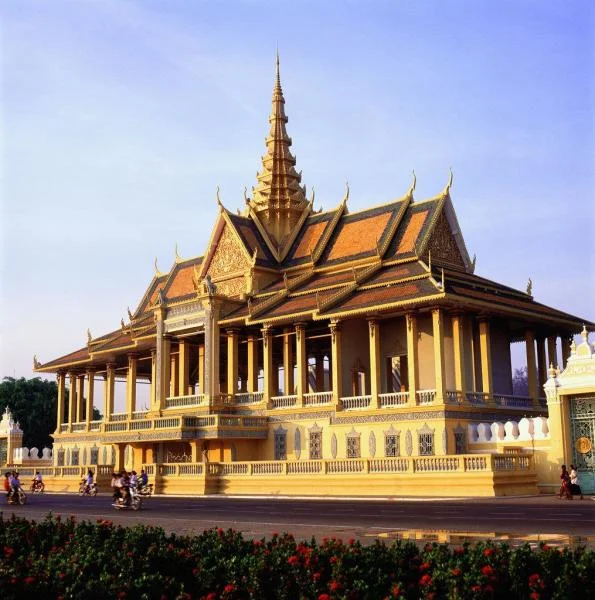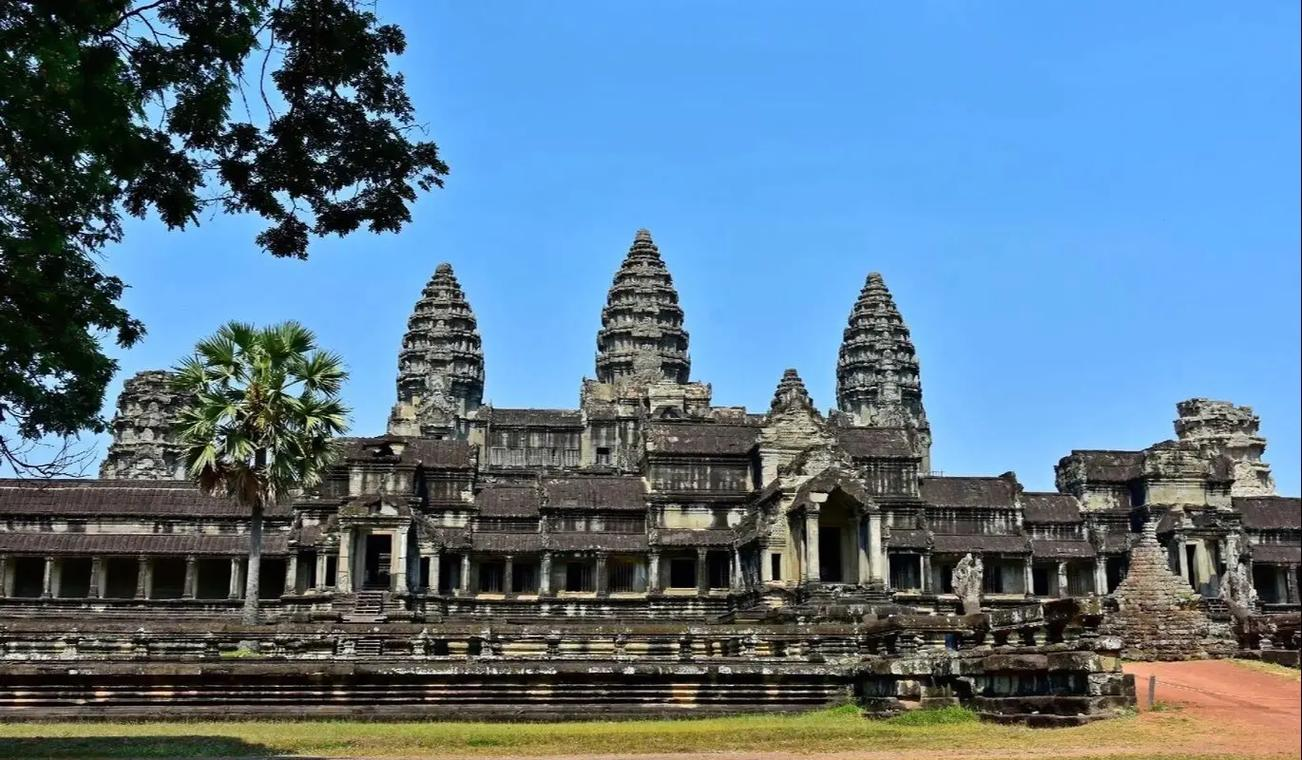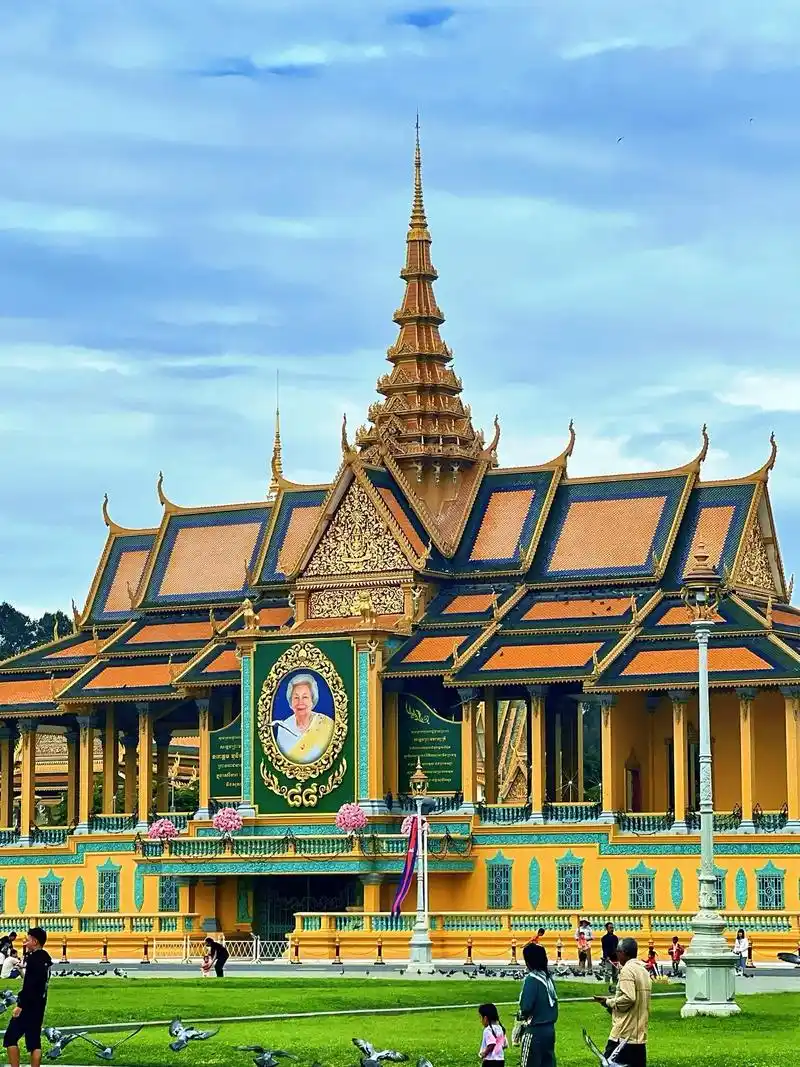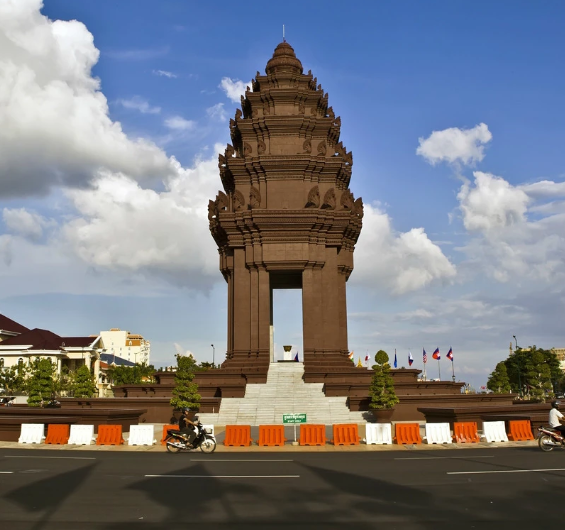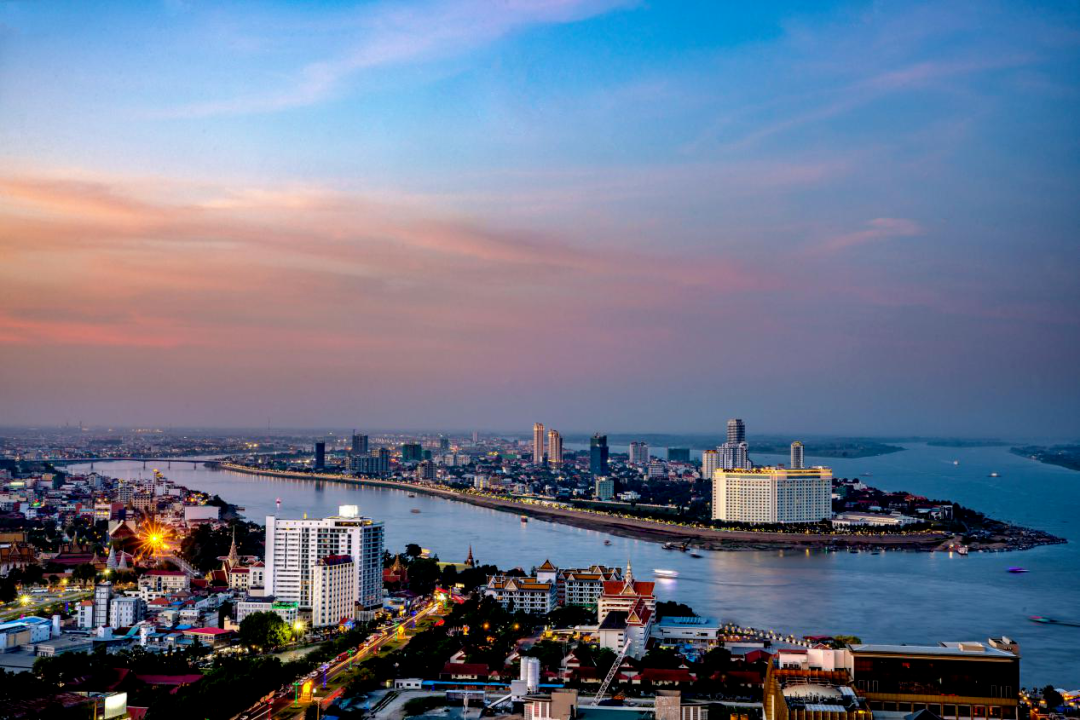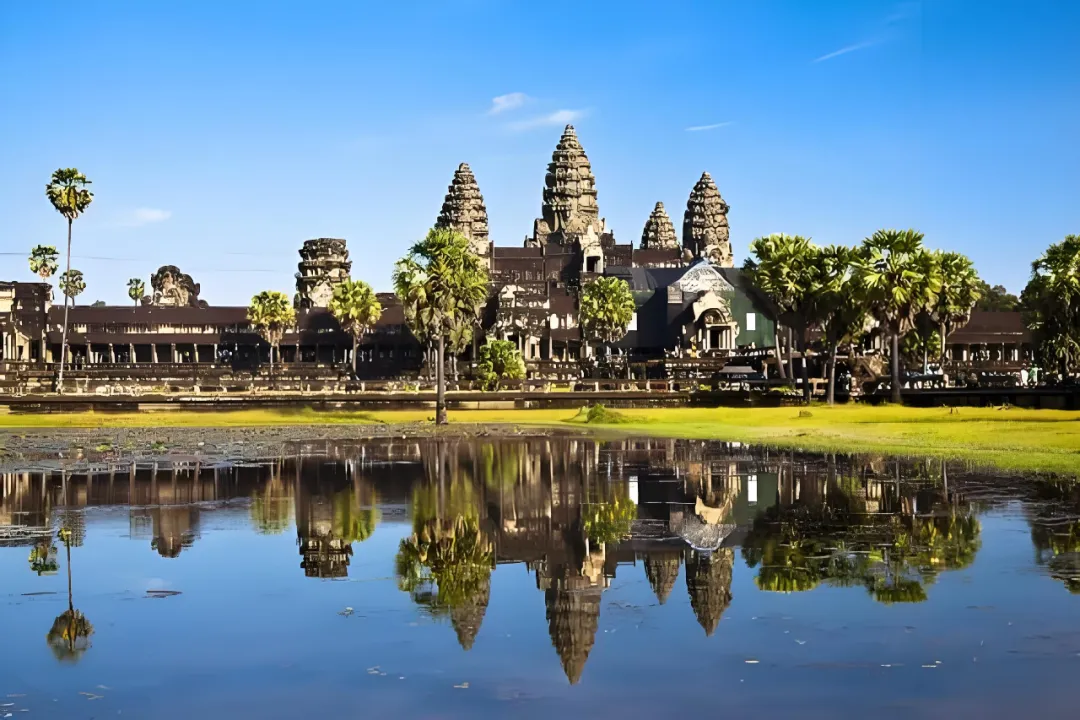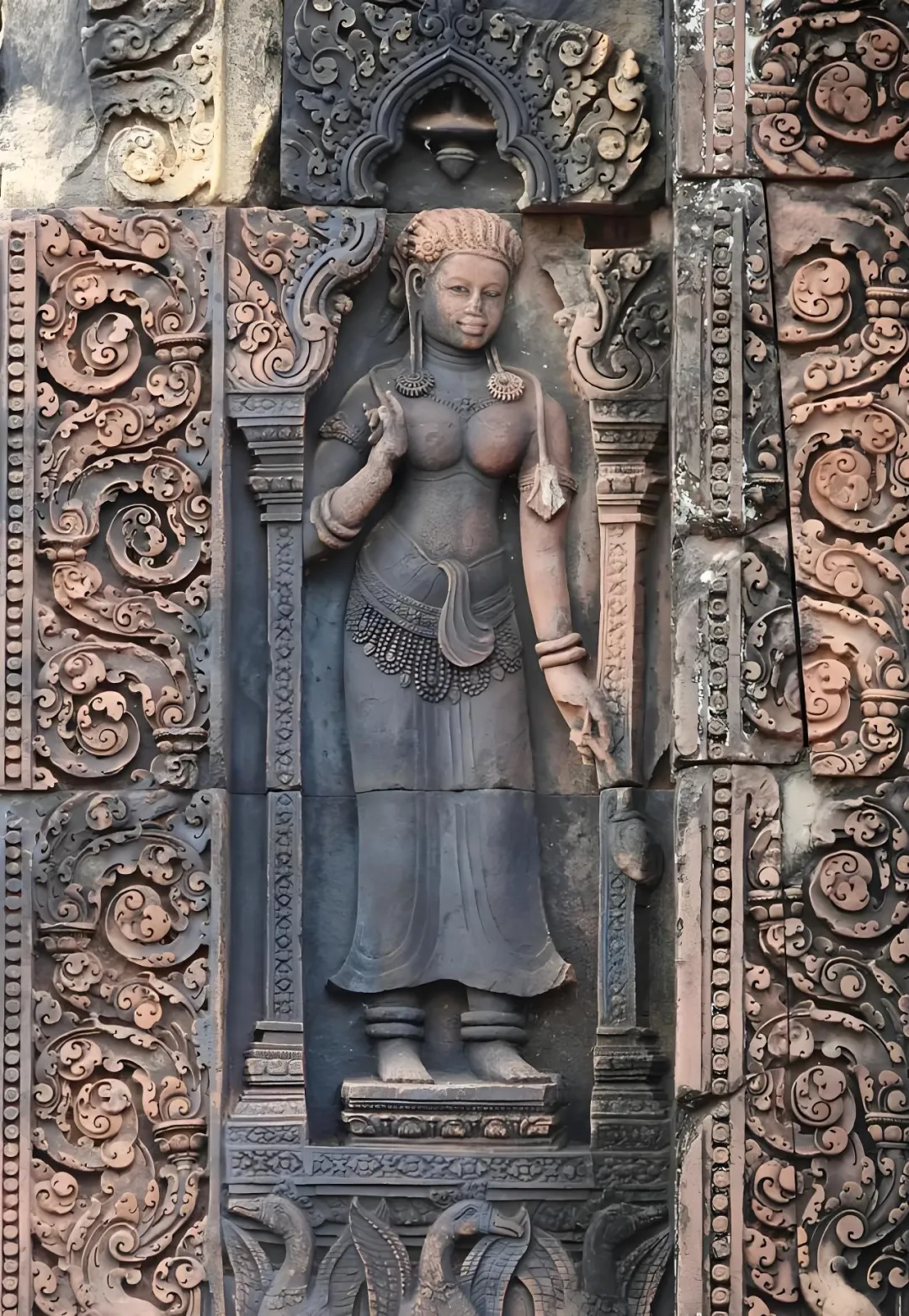Cambodia 02丨Phnben, Kampung Sippi, White Horse, Xigang, Battambang
Keep going! Let’s first collect the end of the Phnom Penh. There are some places that were not mentioned in the previous article, so I will continue this article.
Naga World
Located next to Sihanoukville Avenue, this is the only gambling center in Phnom Penh, which enjoys exclusive management rights in Phnom Penh and is also the largest casino in Cambodia. Including the existing and planned floor area, there is about 190,000 square meters. Of course, it is not only gambling, but also an entertainment complex, covering hotels, shopping, theaters, conferences and exhibitions and other facilities.
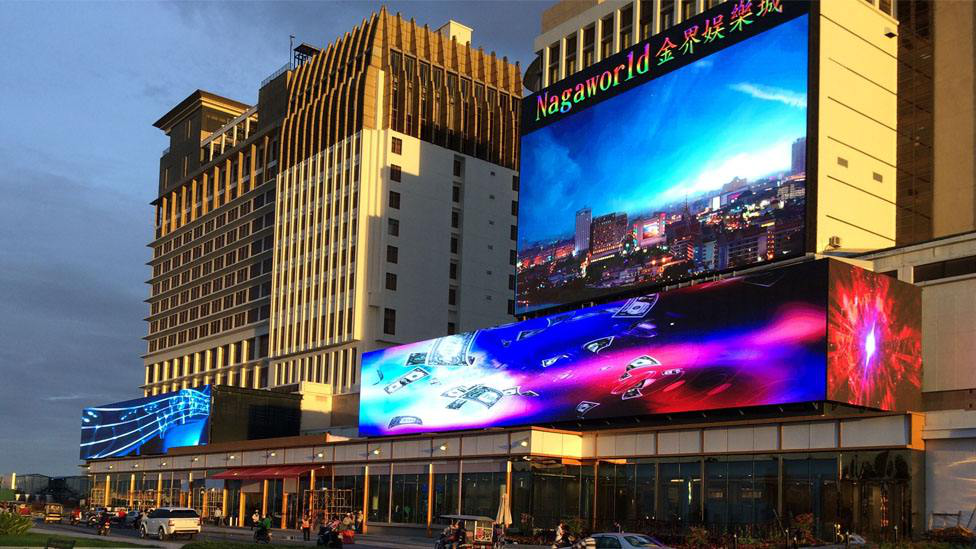
The picture shows the Golden World Entertainment City of Phnom Penh
Phnom Penh Central Market
This is a rather special building located in Phnom Penh City. In the center of the building is a large golden dome with no beams or columns. There is a long corridor extending out on each side, forming a cross-shaped shape. The roof is stepped, with white horizontal lines and gold vertical lines, and gold inside. Overall, it looks magnificent and quite domineering.
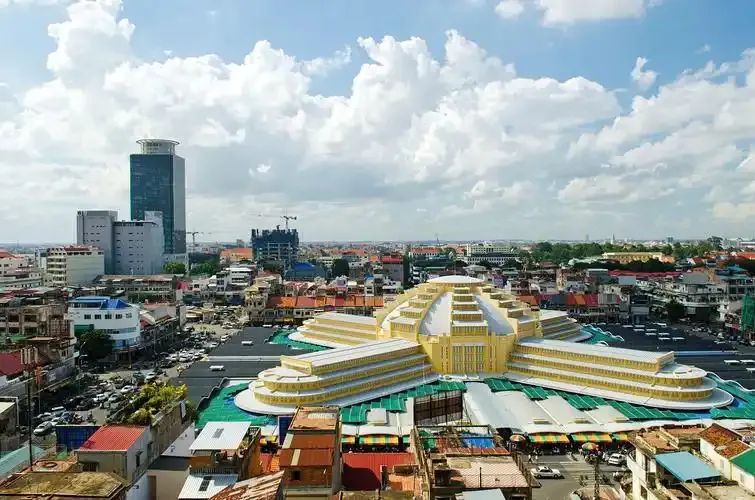
The picture shows Phnom Penh Central Market
The central market is a comprehensive market, divided into small stalls, including clothes, fruits, daily necessities, handicrafts, jewelry, etc. Here are some of the more distinctive products in Cambodia.
Krama: This is a necessity for Cambodians' daily life and decoration, and it is also a symbol of national clothing. It is usually rectangular, about 1 meter long and about 0.85 meters wide. It is mostly solid color and square, and is woven from cotton yarn or silk. Because of its soft texture, good water absorption, low price and wide range of uses, it can be tied around the waist to wipe sweat when working. When the sun is strong, it can be worn on the head to protect the sun. When taking a bath, it can be used as a bath towel. When taking a baby, it can be used as a strap. After unfolding, it can be used as a packaging bag. It is quite practical.

The picture shows the water cloth sold in a Phnom Penh shop
Chapei Dang Veng: The long-armed piano is one of the most representative national musical instruments in Cambodia. It is recorded on the stone walls of Angkor Wat and has a history of hundreds of years. The long-arm piano is made of wood, divided into four strings and two strings. The more common one is the second string, with thick strings as bass and thin strings as high notes. The current long-arm piano not only has a traditional side, but also actively integrates with modern music. "Time To Rise", the most well-known long-armed piano master in Cambodia, and local hip-hop singer Vannda, has played more than 100 million times on the YouTube platform, making it the most popular Cambodian song on YouTube.

The picture shows the poster of Cambodian long-arm piano master Kong Nai
Phnom Penh Night Market
In Southeast Asia, Phnom Penh’s night markets are relatively developed, with many large and small night markets. The most famous ones are the Tonlesa River Night Market and the No. 5 Night Market. The former is located beside the Tonlesa River near the Royal Palace. It is renovated from the street garden and is relatively old-fashioned; the latter has only started business in recent years, with a larger area and more shops. There are rich street performances in both night markets, and the evenings are still very lively. Take this opportunity to introduce some more distinctive Cambodian food.
Amok fish: This is a traditional Cambodian delicacy and a national cuisine in Cambodia. Amok fish is a fish that lives in the tropical region with delicate meat. First mix various spices such as fish, coconut milk, curry, lemongrass, turmeric powder, etc., then steam it in banana leaves and serve it on the table. You can also add some chili powder to decorate it. It not only retains the umami flavor of fish, but also has the rich coconut milk and curry, but also has the fragrance of banana leaves, which has endless aftertaste.
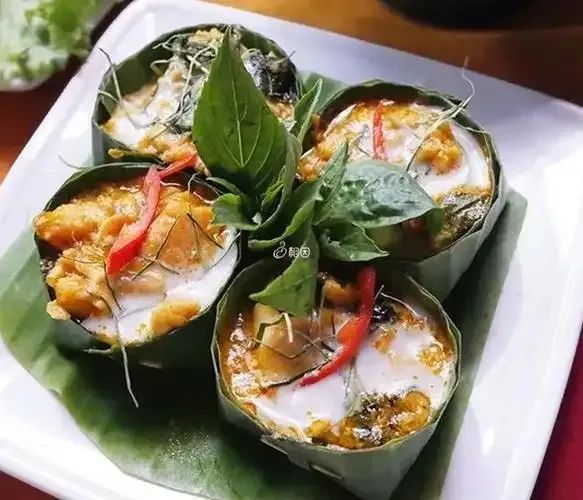
Pictured is a gold-edged amoxic fish
Pork rice and rice noodle soup: These two are the most common and simplest food combinations in Cambodia. It is a favorite breakfast choice for Cambodians. For pork rice, cut the pork into thin slices, marinate it with brown sugar and fish sauce, then grill it on charcoal fire, pair it with brown rice, and then serve it with pickled cucumbers, radishes and other vegetables. After the pork has been processed and roasted, the meat smell has been removed, and the smoky taste has been added, and it also has a sweet aftertaste. Rice noodle soup, the soup base is mostly chicken soup or fish soup, and there are also curry soup bases. Put the cooked rice noodles into a bowl, add the prepared soup base, and then sprinkle with bean sprouts, cucumbers, mint leaves, basil leaves, banana flowers, etc. You can also add lemons and millet peppers according to your taste, which tastes very mellow.
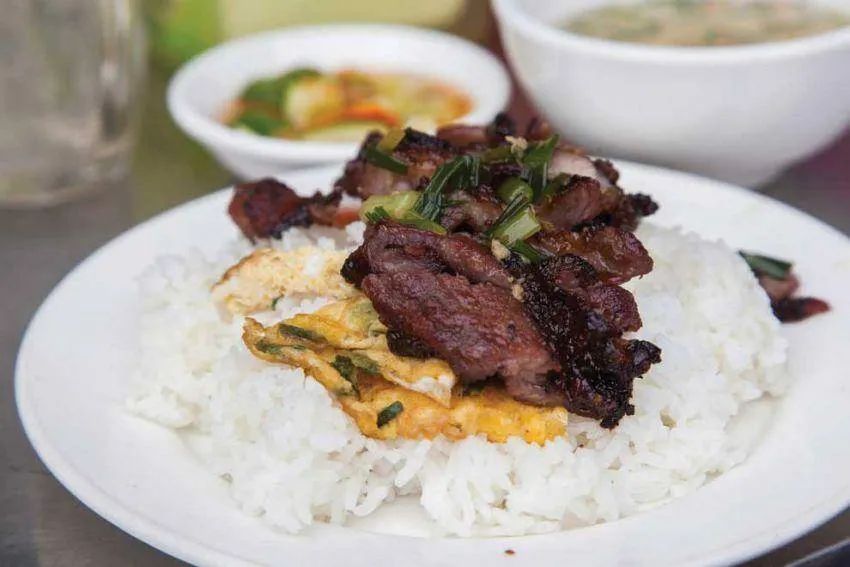
Pictured is Pork Rice with Phoenix
Khmer Red Curry: This is a unique curry sauce in Cambodia. It does not have Thai curry spicy, with moderate chili and coconut milk as the base. Usually, beef or chicken is used as the staple food, with potatoes, eggplant, etc., add 2 spoons of red curry paste, local specialty Kroeung sauce, coconut milk, fish sauce and other spices, and stir evenly and cook.
Gorxi: There should be no need to introduce this. The rich fruits in the tropical regions and the rich spices in Southeast Asia can match any taste you can't imagine. More special fruits, such as milk fruit, snake skin fruit, dragon uterus fruit, avocado, brown candy, etc., can be tried. The most special thing is the brown candy, which is the fruit of the Cambodian national tree, which will be mentioned later.
【Kong Shibei】
After writing so much, I'm leaving Phnom Penh now. Start again, about 50 kilometers west, and you are going to Kampung Spei Province in southern central and southern Cambodia.
Kampong Spei Province, also known as the "Practical Province", is an important agricultural and manufacturing center in Cambodia. Of course, I am not here to introduce these, but Cambodian brown sugar that is rich in here.
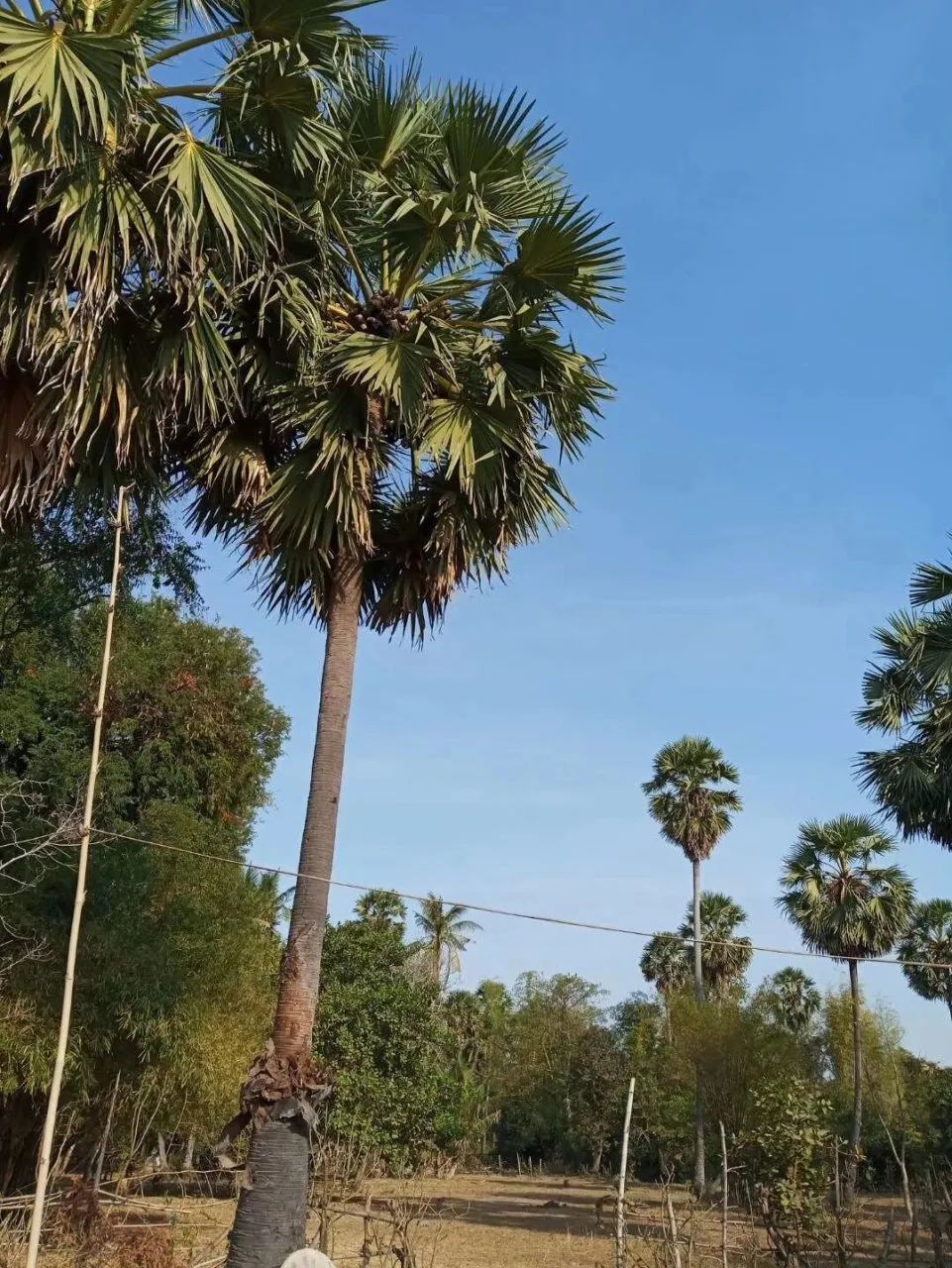
The picture shows the national palm sugar tree in Cambodia
Brown sugar is a traditional natural sweetener, mainly derived from the flower juice of the brown sugar tree. The brown sugar tree is a national tree in Cambodia, and looks like a blooming fireworks. It is said that during the Angkor Dynasty, the army planted brown sugar trees wherever they went, so the brown sugar trees also symbolized the territory of Cambodia.
The method of making brown sugar is very traditional. During the sugar-picking season, farmers will climb up the brown sugar tree and cut the male flowers open, allowing the flower juice to flow into the bamboo tube below. Pour the collected flower juice into a large pot and heat and stir to make the flower juice thicker and solidify. Then pour it into a container made of coconut leaves, and then cool down to form brown sugar. This manual collection and production process has been going on for hundreds of years.
Compared with sucrose, brown sugar contains more nutritional value. It not only contains carbohydrates, but also contains protein, trace fat and rich minerals (such as iron, phosphorus, calcium, etc.). Brown sugar is also widely used. It can be eaten directly or cooked and seasoned, and can also be used to make wine and vinegar, etc. In addition, brown sugar trees are also rich in uses, and the trunks can be built in houses and leaves can be used for wovening.
【White Horse】
Continue to set off, and this time we drove more than 100 kilometers southward to Baima City, the smallest municipality in Cambodia.
White Horse is a small and beautiful city that was developed as a resort by the French as early as the colonial period. It has beautiful beaches and rich natural landscapes. White Horse Beach, National Park, and Rabbit Island are all good places to visit. However, the most special thing about Baima City is its seafood trading market.
Baima City is located on the coast of Cambodia, facing the Gulf of Thailand, with rich seafood resources, the most popular and well-known of which is the Blue-footed Crab. This crab is named after its blue legs and lives mainly in the mangroves of white horses. The mangrove environment here is unique, providing blue-footed crabs with abundant food and good habitat, making them tender meat, fat and thin skin, and very affordable. Paired with the famous pepper in Kampot Province next door, you can make the famous dish "Stir-fried crab with pepper". The umami flavor of crab meat and the slightly spicy and sweet pepper are fusion, with a unique taste and endless aftertaste. The blue-footed crab has become the business card and symbol of the white horse, and the city government has also built a statue of the blue-footed crab on the sea.
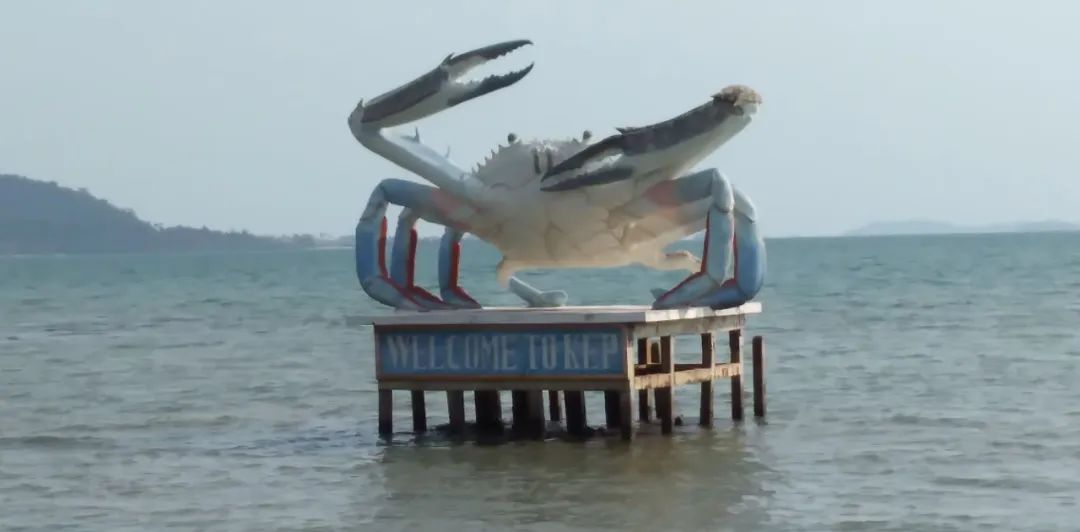
The picture shows a crab statue on the sea of Baima
To add to the additional meaning, the pepper produced in Kampot Province next door is also a very well-known specialty. As early as the 19th century, it was deeply loved by French chefs and enjoyed the reputation of "King of Pepper" and "Spicy Gem" in Europe. In 2010, it was recognized as a geographical indication product by the WTO and is now exported to Europe in large quantities for pepper for French cuisine.
De Chong Funan Canal
Since we have arrived at Baima, let’s introduce the “De Chong Fu Nan Canal”, a major project closely related to Baima.
In Mian County, Ganden Province on August 5, 2024, Prime Minister Hong Manai personally presided over the groundbreaking ceremony of the Dechong Funan Canal and pressed the start button. More than 20,000 people gathered at the scene, with the crowds of people and unprecedented grand occasions. To this end, the Cambodian government even announced a one-day paid holiday nationwide. The "De Chong" in the canal name refers to a general who defends territory and resists foreign enemies. "Funnan" has also been mentioned before. It is the oldest kingdom in Cambodia, so the name of the canal also means defending Cambodia.
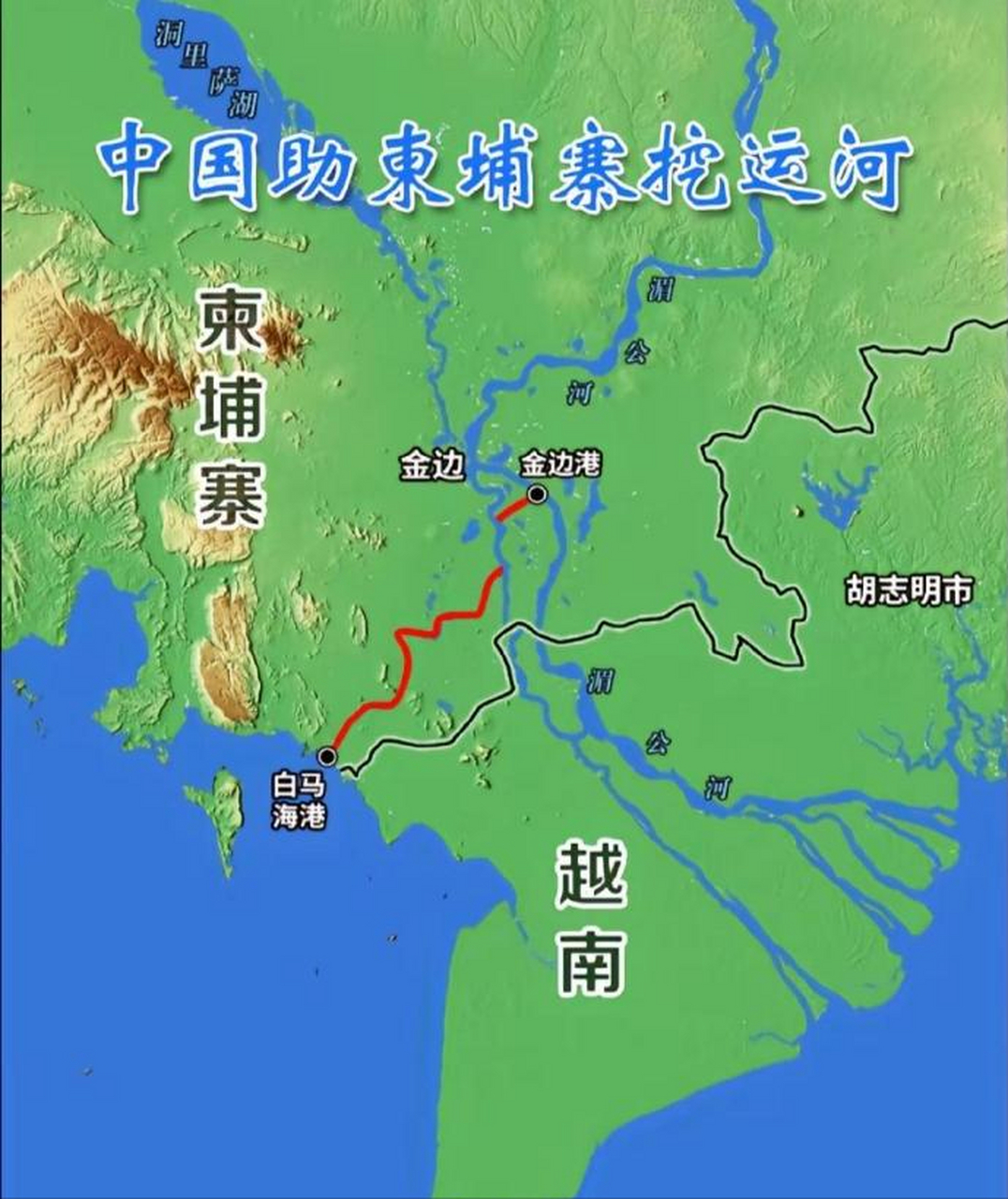
The picture shows the route map of the Dechong Funan Canal
The De Chong Funan Canal starts in Preco Ambel, 30 kilometers southeast of Phnom Penh, flows through many provinces and eventually merges into the sea in Baima City. The total length of the canal is 180 kilometers. Covering a population of 1.6 million, costing up to US$1.7 billion, it is jointly built by a joint venture between Cambodia and China, and is expected to be completed and opened for navigation in 2028. The greatest significance of this canal is that it can help Cambodia get rid of the Mekong estuary under Vietnam, allowing inland goods to go directly to the sea through the canal within the country, reducing transportation costs and the risk of chokes. Maybe this is not very intuitive, let’s talk about some data.
Currently, the proportion of goods exported by Cambodia through the Mekong River accounts for as high as 33%. Cambodia must also load and unload through Vietnam's ports, and Vietnam can charge a large toll. Of course, every container loading and unloading costs US$300. Not only that, Vietnam also threatened to blockade the Mekong estuary and restricted Cambodia's trade and foreign policy. It blocked the estuary twice in 1994 and 2020, seriously affecting Cambodia's economy. Therefore, the construction of this canal made Prime Minister Honmanai sigh that "Cambodia can finally breathe with its own nose."
Of course, this is not the first time that China has helped build Cambodia. In 2022, the "Ginggang Expressway" built by China was officially opened to traffic. On one end is the capital Phnom Penh, and on the other end, it is also the second largest city in Cambodia, the next stop, Sihanoukville.
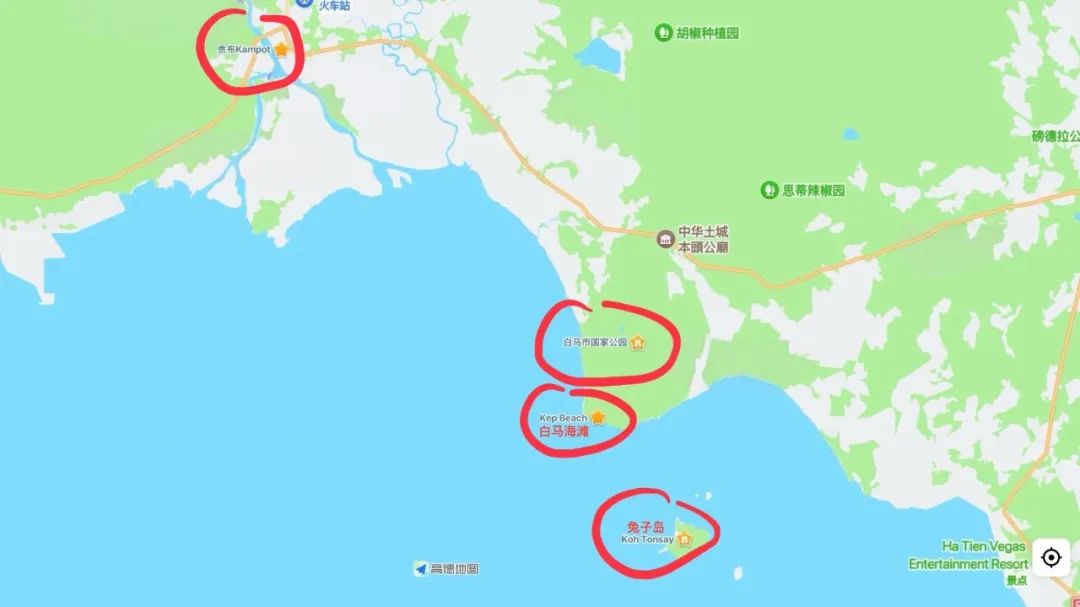
The picture shows the roadmap of the white horse
【Sihanoukville】
Starting from White Horse, heading 100 kilometers west along the coastline, you will arrive at Sihanoukville.
Sihanoukville is a harbor city, and some people call it "Sihanoukville Port", abbreviated as "Sihanoukville Port". As the name suggests, the name Xigang was chosen to commemorate the father of independence, Prince Sihanouk. Its previous name was "Kangsun".
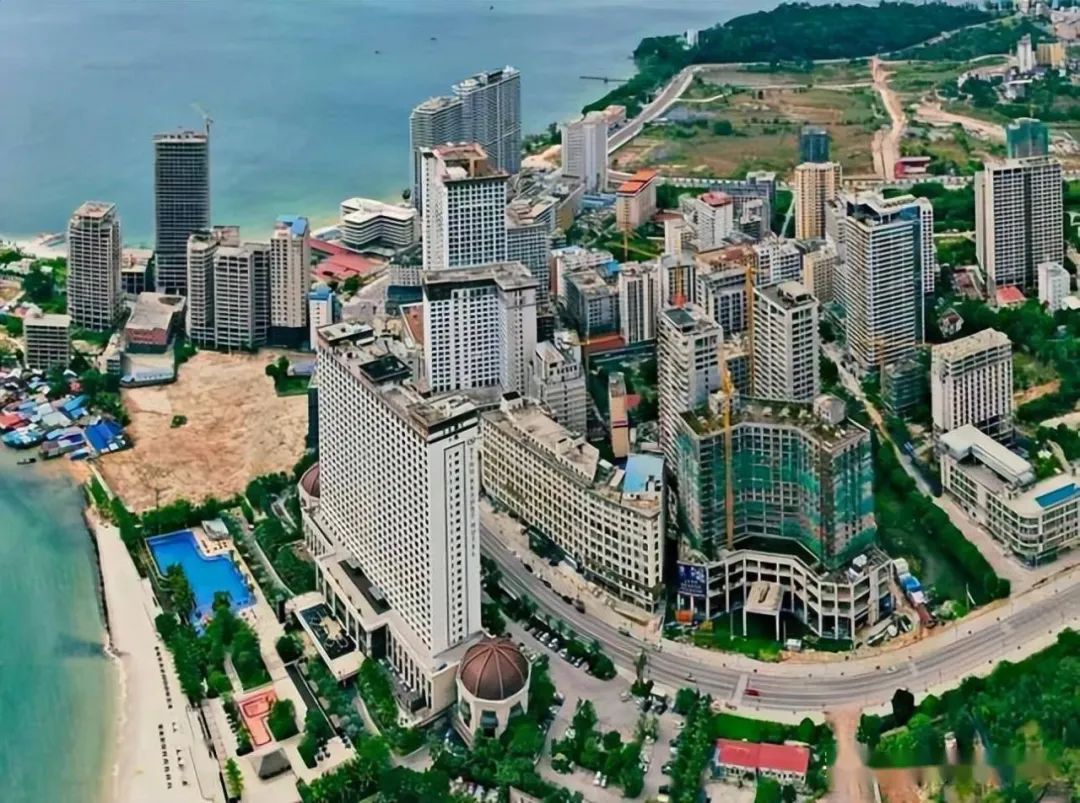
The picture shows a view of the city of Xigang
Xigang has the largest seaport in Cambodia, the only deep-water port and duty-free port, and the largest special economic zone in Cambodia. It is Cambodia's industrial center and trade center, known as the "Little Shenzhen". At the same time, Cambodia's tourism industry is also quite developed. There are fine sandy beaches on the land, natural sister islands (Gaolong Island and Gaolong Salem Island) on the sea, beautiful corals, glowing night sea, rich seafood, Chinese restaurants everywhere, and unrivaled resorts. But this is just the angel of Xigang. Xigang may be one of the most dangerous cities for Chinese people, and it all starts with the casino.
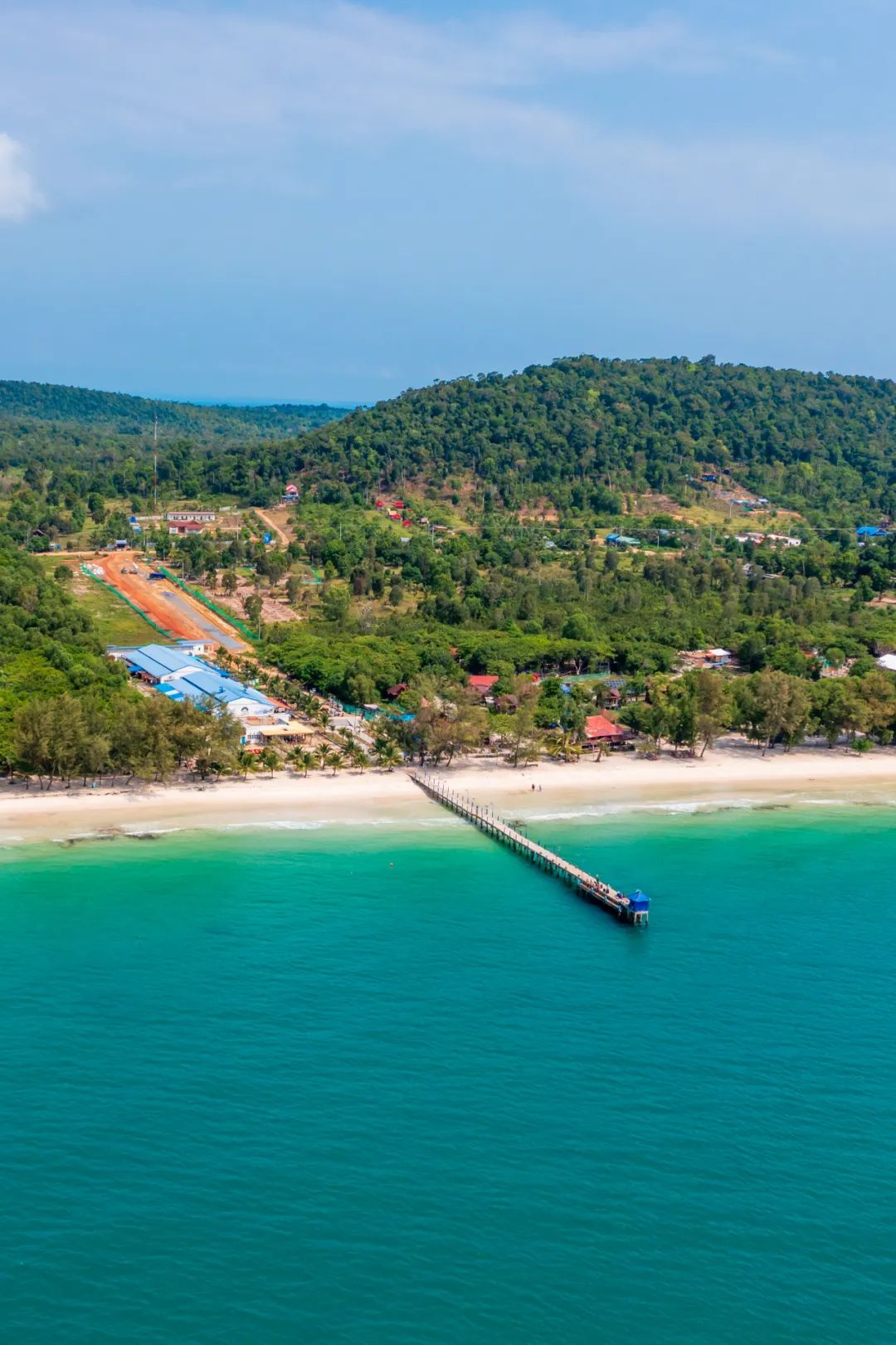
The picture shows the Gaolong Island Wind in Xigangscene
Cambodia, like most Southeast Asian countries, allows some casinos to operate legally. There are as many as 195 casinos in Cambodia, of which 97 are occupied by Xigang, and 60 are still operating normally. Compared with the permanent population of more than 200,000, Xigang is a real casino. Coupled with the imperfection of the law, the lack of supervision, and the rampant sexual intercourse of pornography, drugs, and violence. The most fatal thing is that Cambodia did not restrict online gambling and foreigners from buying houses at that time. Prices soared during the holidays amid the housing speculation craze, and countless telegram fraud parks were also breeding, and the entire Xigang was immersed in a false prosperity.
Until 2019, China began to crack down on overseas online gambling and telecom fraud, and Xigang was the key target. Cambodia has also issued a ban on online gambling, cooperated with China to investigate major telecom fraud parks and arrest thousands of criminal suspects. This has had a serious impact on the economy and society of Xigang. A large number of casinos have been closed, the source of customers in related industries has dropped sharply, a large number of restaurant stores have closed down, hundreds of thousands of people have either relocated their families or been arrested and repatriated, leaving behind an unfinished building everywhere and empty Xigang.
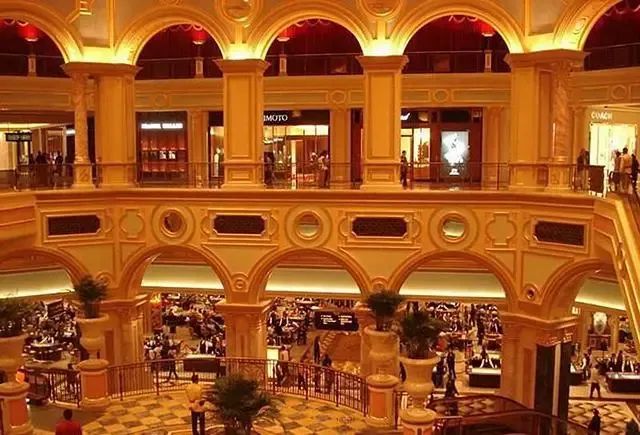
The picture shows the interior of a casino in Xigang
Fortunately, things are developing in a better place. With the deepening of China-Cambodia cooperation, China has increased its investment in Cambodia and built the Jingang Expressway. The economic status of Xigang has gradually become prominent. The number of tourists coming to Xigang is also increasing year by year, and the public security situation is also improving, but the road to recovery is still long and long.
This is the story of Xigang, from a city with the most Chinese to a city with the most dangerous to Chinese, and finally becoming a city with bad luck... I hope that one day in the future, when everyone talks about Xigang, their first impression will be of beautiful islands, beaches and bustling metropolis.
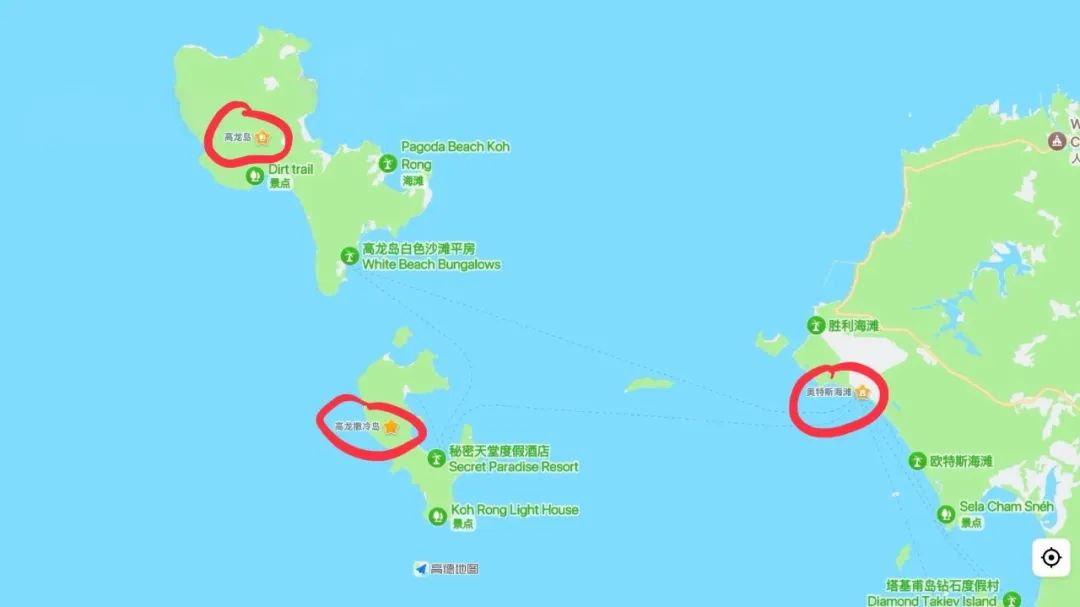
The picture shows the Xigang Roadmap
Next is another long journey, which requires about 400 kilometers northward to Battambang, Cambodia's second largest city.
【Cardamom Mountain】
During this long journey, you will pass by a mountain with a very good name, "Kuacomo Mountain". Of course, the "cardamom" here does not refer to girls, but is very straightforward. There are only a lot of cardamom planted on the mountain.
Cardamom Mountain is the most famous mountain range in Cambodia, traveling northwest to southeast, stretching for hundreds of kilometers. On the east side is Ola Peak, the highest peak in Cambodia, with an altitude of 1,813 meters. The entire southwest slope is covered by pristine tropical rainforests, with 16 different ecosystems and houses more than 59 endangered animals in the world, including Malay bears, Siamese crocodiles, Indian tigers and Asian elephants. Not only that, due to the high forest coverage rate, large altitude drop, and a wide variety of trees, the mineral and wood resources here are also quite rich, and the most fascinating thing is the agarwood here.
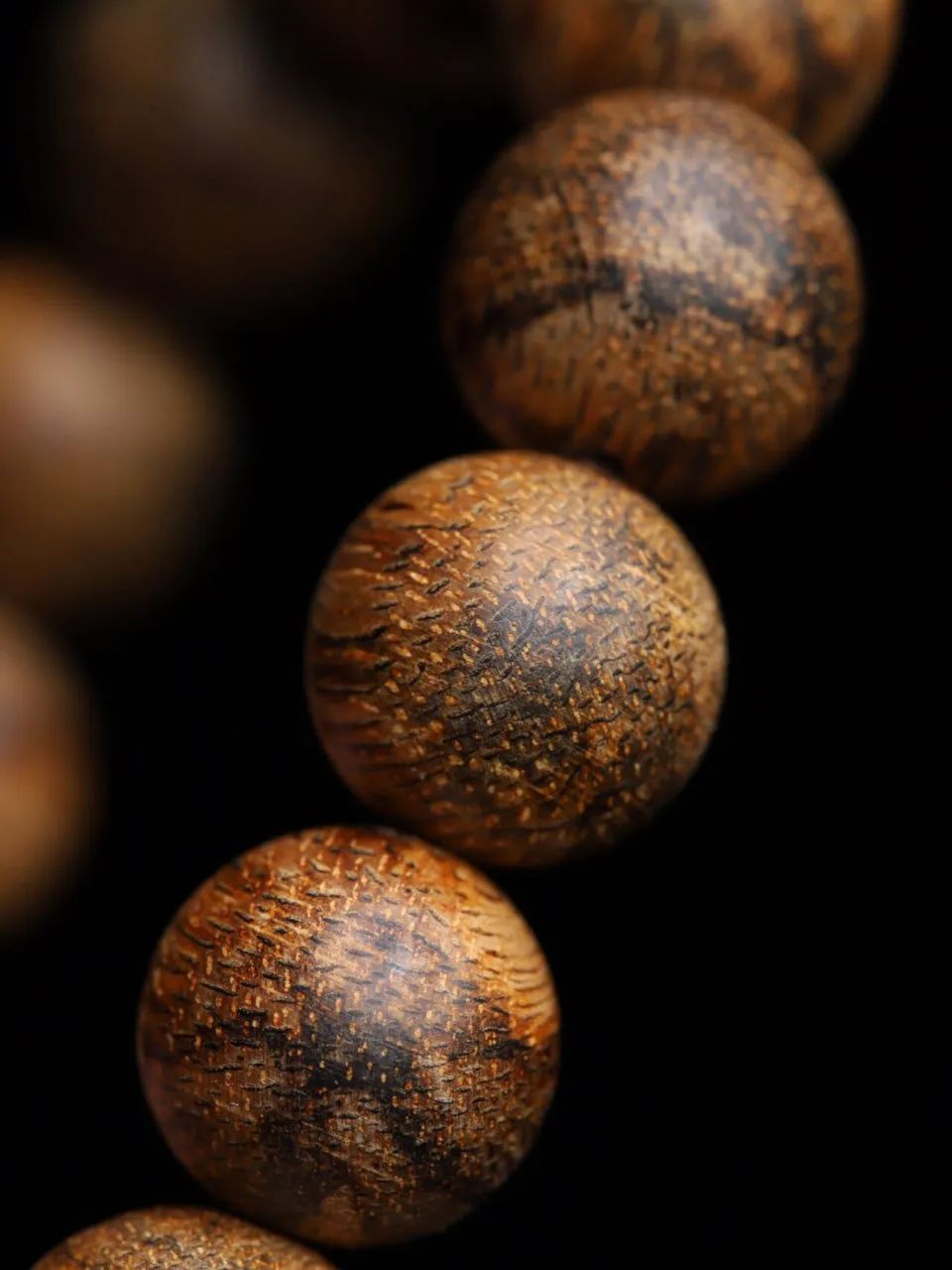
The picture shows the "Qinan" agarwood in the Bodhisattva Province of Cambodia
The so-called agarwood refers to a special fragrance material that is formed by a specific fragrance tree under specific conditions and takes decades or even hundreds of years. The origin is mainly distributed in Southeast Asia and Hainan, China. It is very precious and is known as the "diamond among plants." Cambodia's agarwood comes from Cardamom Mountain, and is famous for its unique aroma and high oil. Also because the conditions in different regions of Cardamom Mountain are different, agarwood can continue to be subdivided. For example, the agarwood in Gegong Province is close to the sea and rich in nutrition, and the fragrance will be mixed with sweet and cool breaths; there is also the famous agarwood in Bodhisattva Province, which is the best among agarwood and is called "Qinnan". Because it grows on the plateau, the environment is rich and the fragrance emits mellow. As the temperature rises, there will be a nutty fragrance, and the aroma lasts for a long time.
Finally, I have to say that the water of agarwood is too deep. There are many inferior agarwood that can be used as the best agarwood to sell at high prices through processes such as oil-soaking and incense. You must have the ability to identify when buying it.
【Battambang】
Ha, we have arrived at the last stop of this article, Battambang, the second largest city in Cambodia.
Battambang is a city with a long history. It was inhabited as early as the Angkor dynasty and was later controlled by Siam (now Thailand) for hundreds of years, and was not returned to Cambodia until the French colonial period. Battambang means "the lost scepter of the king" in Khmer, reflecting its place of weight since ancient times. Today, Battambang has become a trade and transportation hub between Cambodia and Thailand. Because of its developed agriculture and rich products, it is known as the "Cambodia granary".
Black Stick God
When you come to Battambang, you have to mention the Black Stick God. He is the patron saint of Battambang, and his statue is on the roundabout of the island, the only way to enter the city. He knelt on the disc, dark-skinned and wearing a golden hat. He dragged the golden bowl with both hands, and there was a black stick on it. Every day, many locals come to the statue to pray for blessings and bless peace.
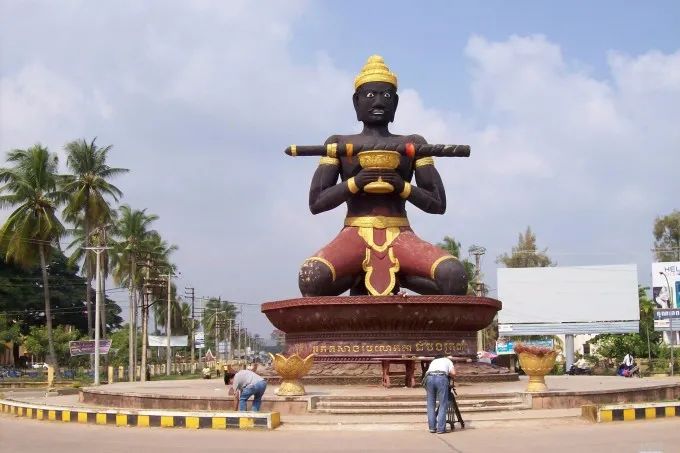
The picture shows the black stick statue of Battambang
According to legend, in 972 AD, the king ordered the logging of wood. Among the people sent to log wood, there was a guy who wanted to stir the rice while cooking. He couldn't find a stick, so he stirred it with a branch, and the rice turned black. After he ate it, he found that his whole body had turned black and his body became stronger, and he could easily break the thick tree trunk. He cut down a magnanimous tree and made it into a stick as a weapon. From then on, people called him "benevolence and magnanimity".
Later, he was magnanimous and usurped the throne and became king. But the wizard's divination prophecy: Bra, the son of the old king, will come back to take back the throne. Despotic and magnanimous said that he would kill him with his stick, and if not, he would take the initiative to transfer the throne to avoid bringing misfortunes to his subjects. On the last day of the prophecy, Bra, the son of the old king, came on a horse, and had been waiting in the palace for a long time. He swung the wooden stick hard and threw it at Bula, but when the wooden stick came to Bula, it fell to the ground and turned into a small river. This small river was later called the Ottambang River, and the area around the small river was called Battambang. After being magnanimous and transferred the throne to Brah, he went to Laos alone and lived there.
In Battambang, there are not only statues of the Black Stick God, but also many related paintings, photos, accessories, etc. Many shops and tuk tuks on the street are decorated with the Black Stick God, and some people also wear the Black Stick God clothes.
Bamboo train
This originated from the fact that the French built a railway system in Cambodia in the 1930s, and later mostly destroyed due to war, leaving only a small section of railway tracks in Battambang. In order to meet transportation needs, local villagers used discarded iron frames to weld them and weave bamboo beds with bamboo to create bamboo trains. The most primitive bamboo train has no power and can only slide backwards with bamboo poles. However, the current bamboo train has an engine installed and can even reach 50 kilometers per hour.
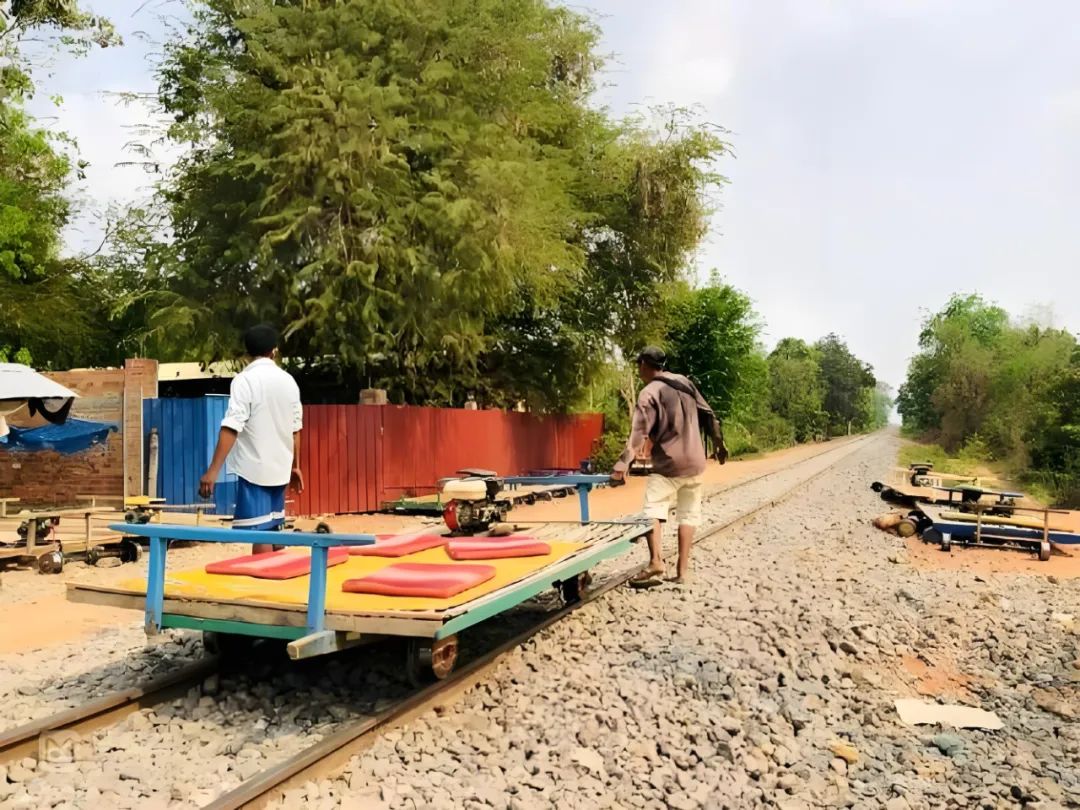
The picture shows Battambang Bamboo Train
But since there is only one rail when you come and go, you can only lift one of the cars coming from the opposite side and let it go before you can continue moving forward. But as transportation becomes more and more convenient, locals no longer have to rely on bamboo trains to transport. The current bamboo trains are completely for tourists to experience check-in.
Bat Cave
This is located on Mount Boshen, 13 kilometers southwest of Battambang. It is a natural limestone cave with a wide interior and various shapes of stalactites and stalagmites. Most particularly, as many as 2 million wrinkled bats are still in the cave. Every 5:30 to 6:30 pm, the bats would fly out from the entrance of the cave in groups and flew to the forest near Tonle Sap Lake to feed. Millions of bats formed a huge black cloud, hovering and flying in the air, and the scene was very spectacular.
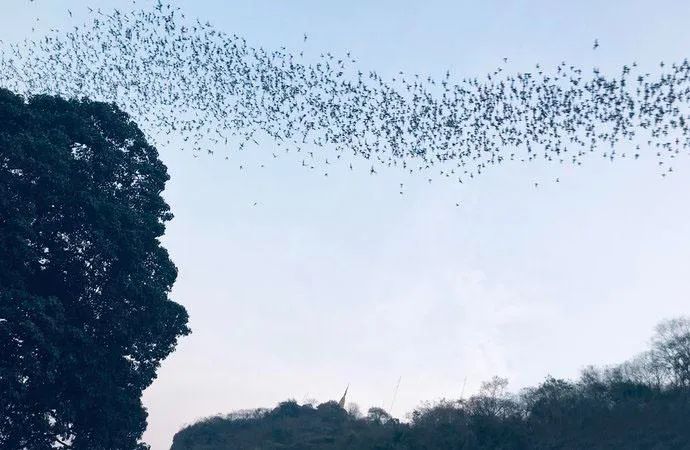
The picture shows a photo of a bat flying out of a Battambang Bat Cave bat
Battambang surroundings
In fact, there are still some places around Battambang that can be visited, so I won’t write it in detail, so I can mention it here. For example, on the mountain south of Battambang, there is an ancient Brahmin temple called "Banan Temple". It was built in the 11th century, earlier than Angkor Wat, with a relatively small area and a layout similar to that of Angkor. You can talk about it when you go to Angkor; there is also the Shapa Mountain Killing Field, which is located on the hillside of Shapa Mountain not far from the Bat Cave. You can tell from the name that this is the site of the Khmer Rouge massacre. They will throw the bodies after the execution directly into the bottomless cave. However, the cave has been cleaned up now, and a golden Buddha statue has been built for tourists to visit.
Battambang Central Market
Finally, come to the central market to relax. Located in the center of Battambang, it was built during the French colonial period in 1936 and has a distinct French architectural style. There is a bell tower on each side of the east and west, but there are no pointers on it. At night, there will be a night market by the river on the east side, which will be open until 2 o'clock in the evening. Battambang is a food city certified by the United Nations. Let’s introduce local food.
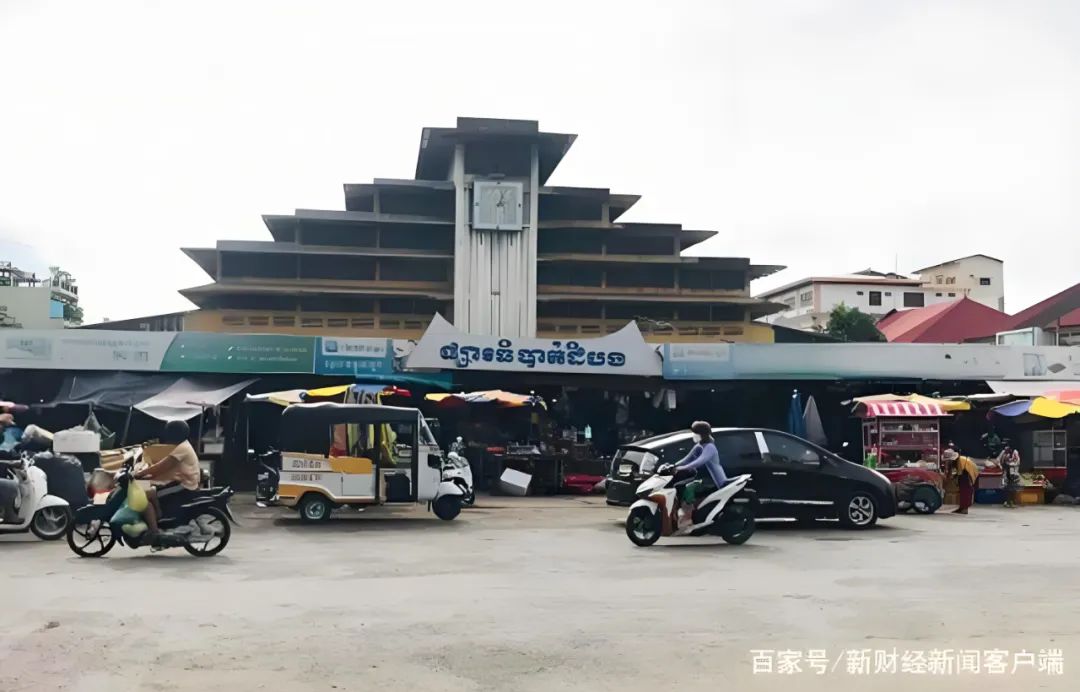
The picture shows Battambang Central Market
Bamboo tube glutinous rice: This is the most distinctive delicacy in Battambang. Put glutinous rice, black beans and coconut milk into a bamboo tube and roast it. After roasting, it will be opened and eaten like a banana. Because there is glutinous rice and coconut milk, it is glutinous and sweet, and the coconut fragrance is everywhere.
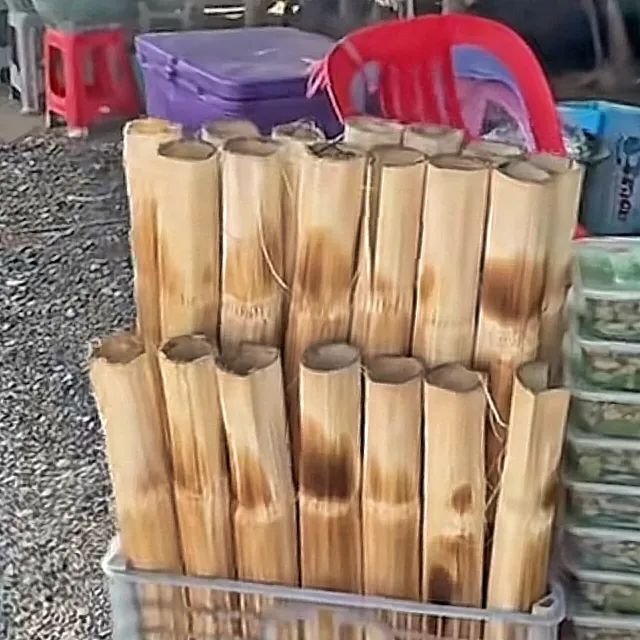
The picture shows bamboo rice sold in a small shop in Battambang
Mi Kola: This is a delicacy brought by Myanmar immigrants and is very popular in Battambang. Use steamed rice noodles, peanut chops, various seasonings and sugar to cold, and then serve with bean sprouts, shrimps, duck eggs, ham sausage and pickled cucumbers. Battambang is sweet per capita, so it should be quite popular with Shanghai people.
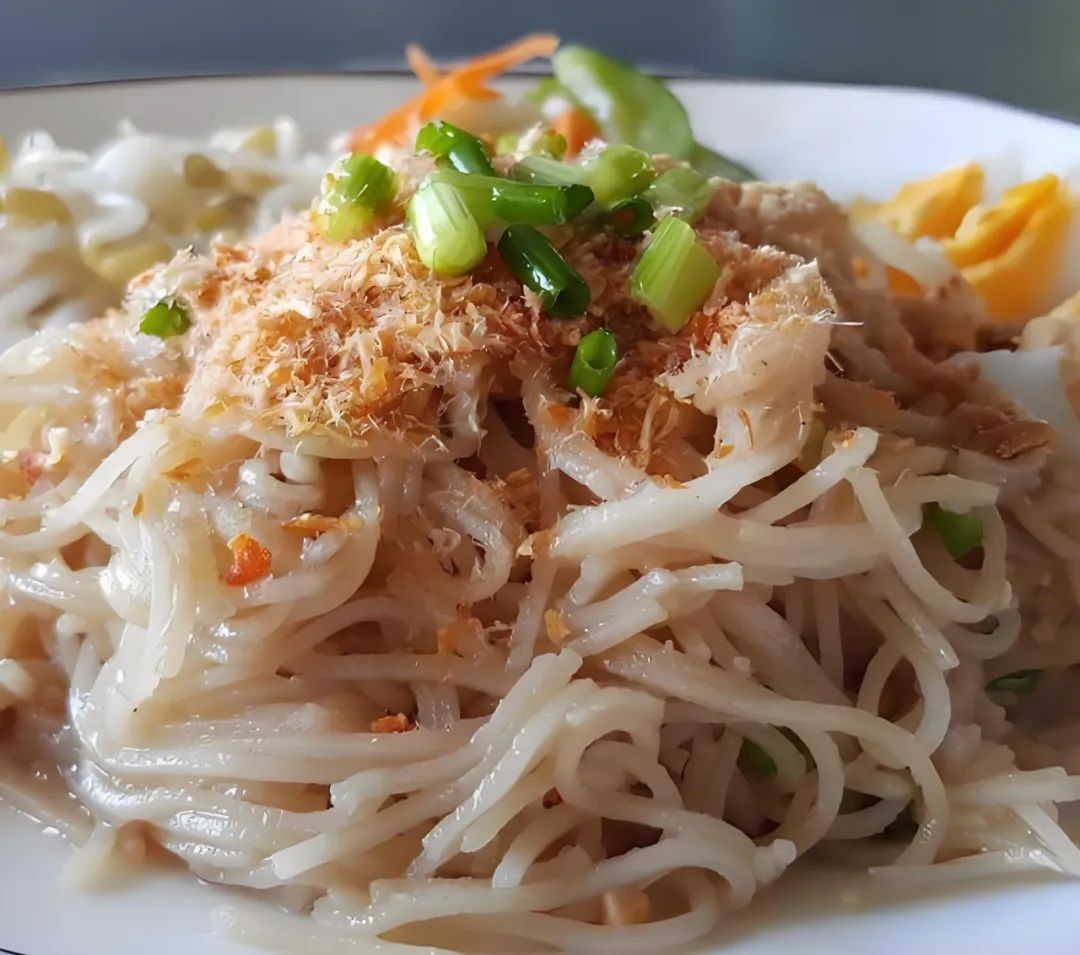
The picture shows ramen noodles in Battambang Valley
Sour fish meat(Nem): Sour fish is made of fresh fish. Usually, the fish is marinated with salt, chili and other seasonings, and then fermented and sour. Then process the fish into intestines and wrap a pickled pepper in the middle. It retains the original fresh and sweet fishy smell, but it has no fishy smell, slightly sour and has chili peppers, so it tastes good to eat.
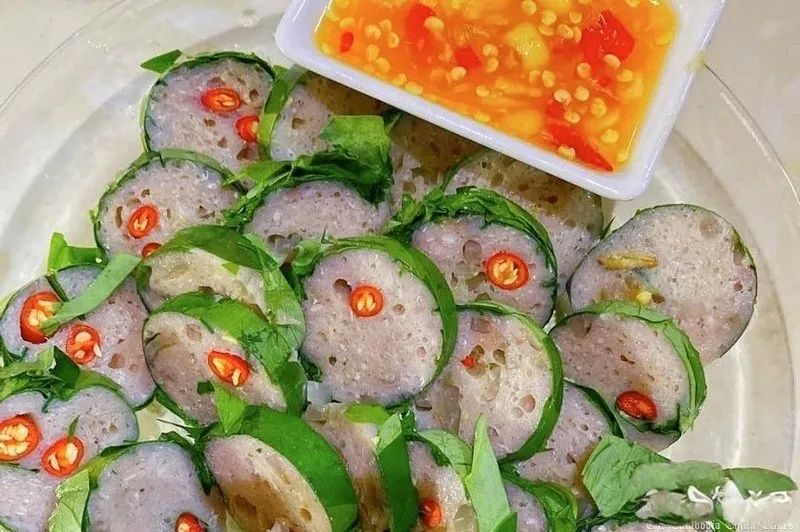
The picture shows Battambang sour fish meat
Roasted field rat: Finally, something special. This is a special delicacy sold by some farmers in Battambang. The voles are marinated first and then roasted in fire. The skin is crispy and delicious. The voles are rich in fat from January to May and have the most delicious taste.
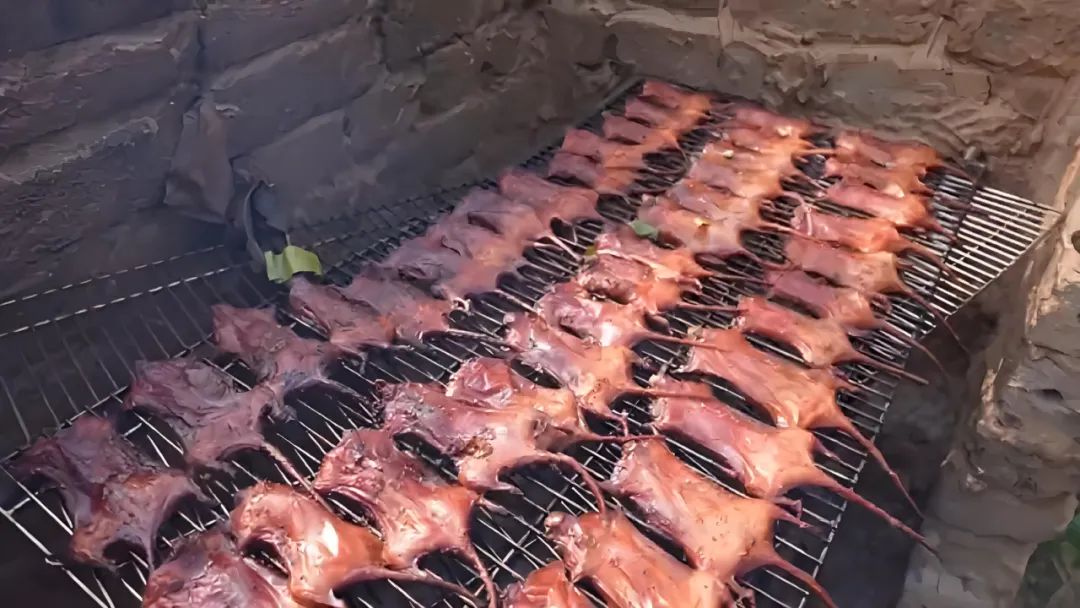
The picture shows a roasted field mouse on a small stall in Battambang
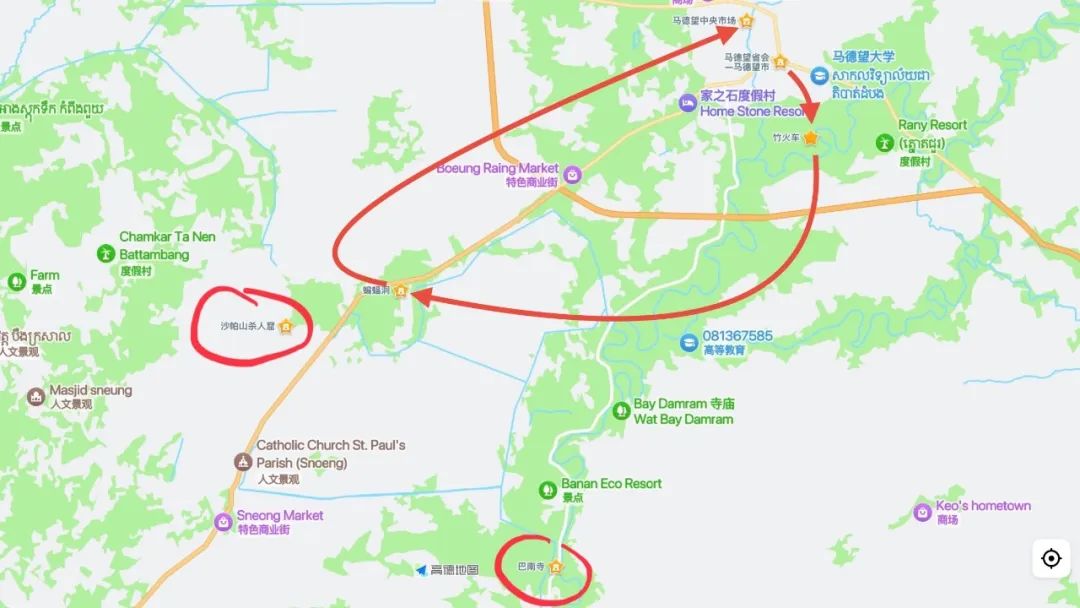
The picture shows the road map of Battambang
OK, that's all for this article. The next article is going to the ancient civilization city of Angkor Wat, I am looking forward to it myself. Here is the roadmap for this article, and we will see you next article.

The picture shows the roadmap of this article
【Tail】
This article talks about casinos, let me introduce a book that I think is great.
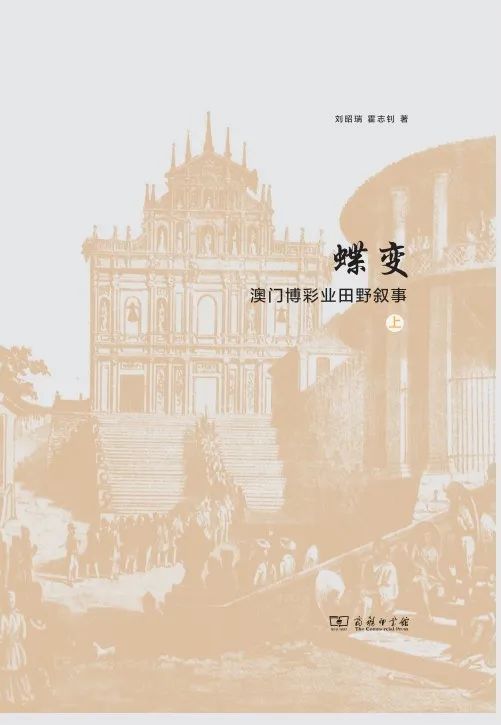
The picture shows the cover of "Butterfly Transformation: Macau Gambling Industry Field Narrative"
"Butterfly Transformation: Field Narrative of Macau Gambling Industry" written by Liu Zhaorui and Huo Zhizhao. Both teachers are from Sun Yat-sen University who study anthropology. They used anthropological survey methods to conduct detailed and in-depth field surveys of the Macau gambling industry. Casinos are a very complex operating system, with detailed research on the competition for capital, how to hunt gamblers, how to develop supporting services... From government supervision and casino management, to dealer etiquette and casino soft decoration, and even some marginal professions in the gambling industry, such as drivers, sex workers, etc., all have detailed research, which opened my eyes. This book has been around 10 years, and the information may be a bit outdated, but the impact is not great, so the book is still worth recommending.





